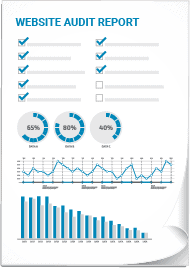According to research, Americans spent $538 billion at home improvement stores in 2021. With almost 60% of American homes being over 40 years old, it is expected that the market for home improvement projects will continue to grow. A home services business can be a good way to capitalize on this trend.
1. Decide Whether to Operate From Home or a Shop
Working out of your home has the advantages of lower startup costs and no commute time. However, as your business expands, you may need more space for a larger shop or to accommodate a growing staff. A physical location outside your home can also build credibility and provide some walk-in traffic.
2. Decide Which Services to Offer
Home services is a broad category. It is unlikely that you have the time, tools, and qualifications to offer every type of service, particularly in the beginning. Make a list of the skills you have and match them with marketable services. Pare that list down by considering which services best fit your skills, have the most profit potential, and you’re most excited to offer. Find out if any of the services you are interested in require you to obtain a license before you can offer them.
3. Decide Where to Market Your Services
It isn’t realistic to offer your services to every homeowner in a large metro area. Unless you are opening your business in a very small town, you should focus on specific areas to market your services. Research the real estate and rental market. Areas with high home sales and rental prices may be home to wealthier customers who have money to spend on home improvement projects. You may also want to consider areas with a lot of investment properties. You may be able to get work with flippers and property managers who buy homes that need work and fix them up.
4. Determine How to Market Your Business
Once you know where to market your services, you need to decide how. You can try listing your business with popular directories of home services businesses, but you may not get the best return on your money by doing this. Running ads on free sites is a low-cost method but may attract bargain-hunting customers who do not want to pay what your services are worth. A better approach may be to create a well-designed website and utilize social media and content marketing to drive traffic to it.
5. Choose a Business Structure
Running a home services business comes with multiple risks, such as injuries to employees, injuries to clients, and damage to client property. Structuring your business as a limited liability company protects you from any liabilities that your business may incur.
However, it may be beneficial to structure your company as an S-Corp instead. With an S-Corp, you still have asset protection, but you can save money by avoiding self-employment taxes. Whether you decide to set up your business as an LLC or an S-Corp, you can avoid expensive legal fees by filing yourself or using a formation service.
Starting a home services business can be a profitable way to utilize your skills and interests. Taking steps, such as choosing a business structure, will help you successfully launch your business.




